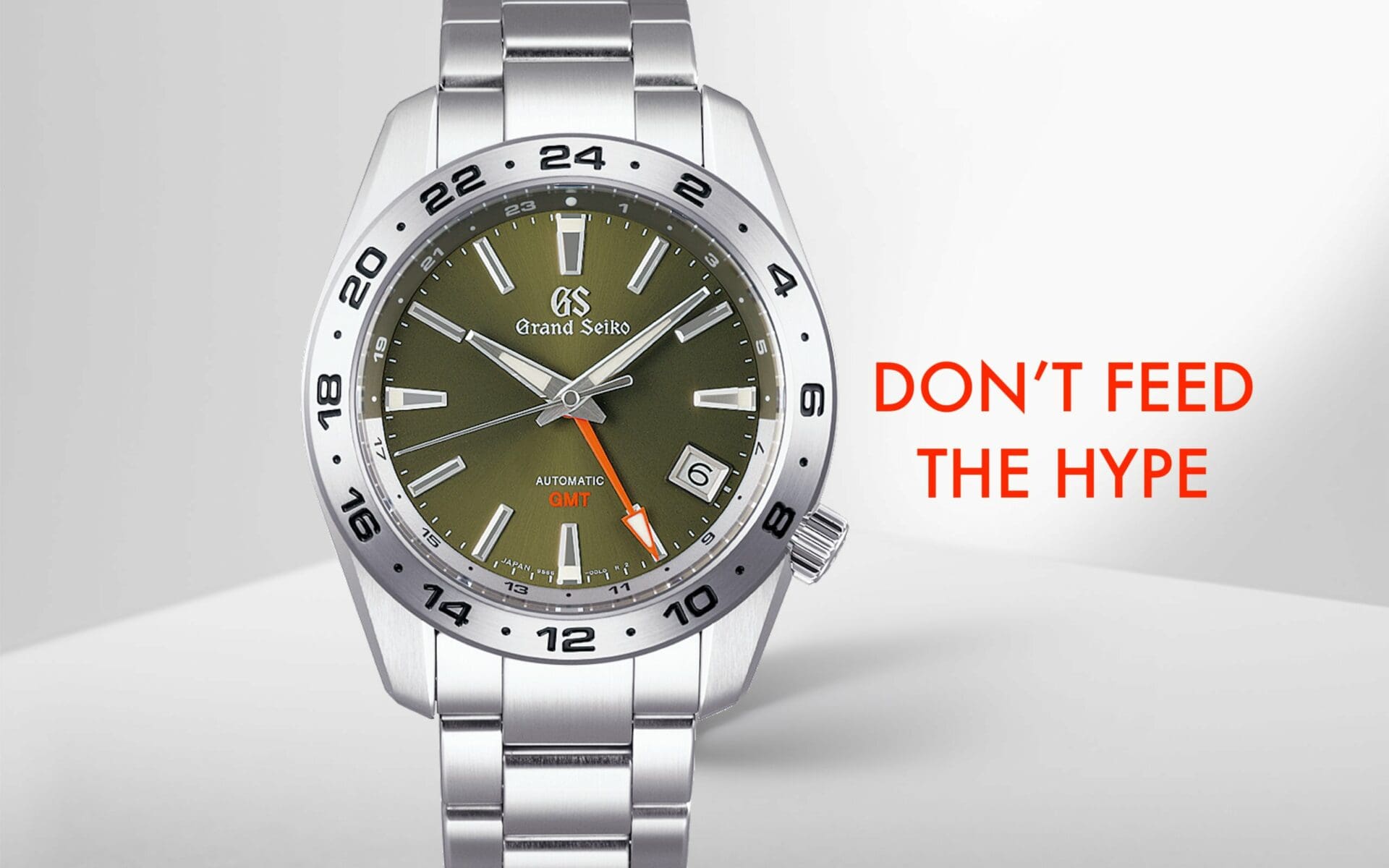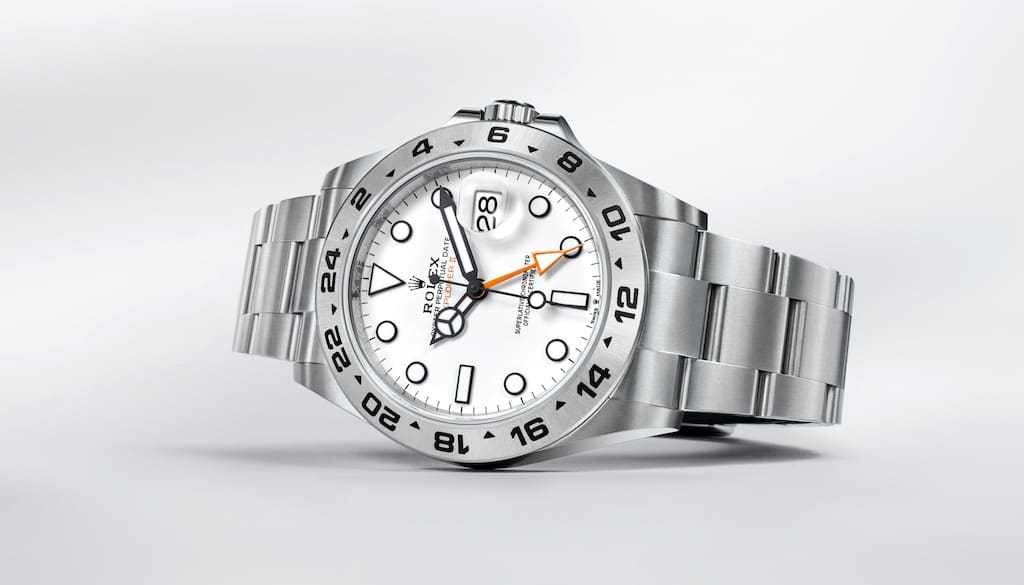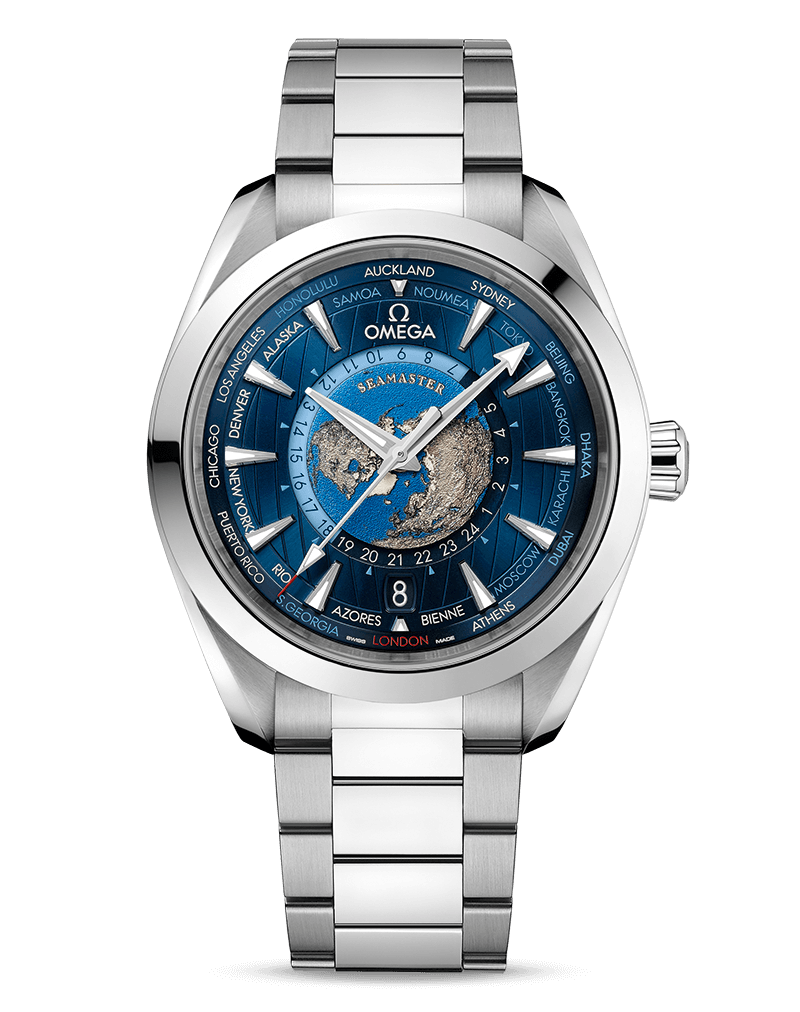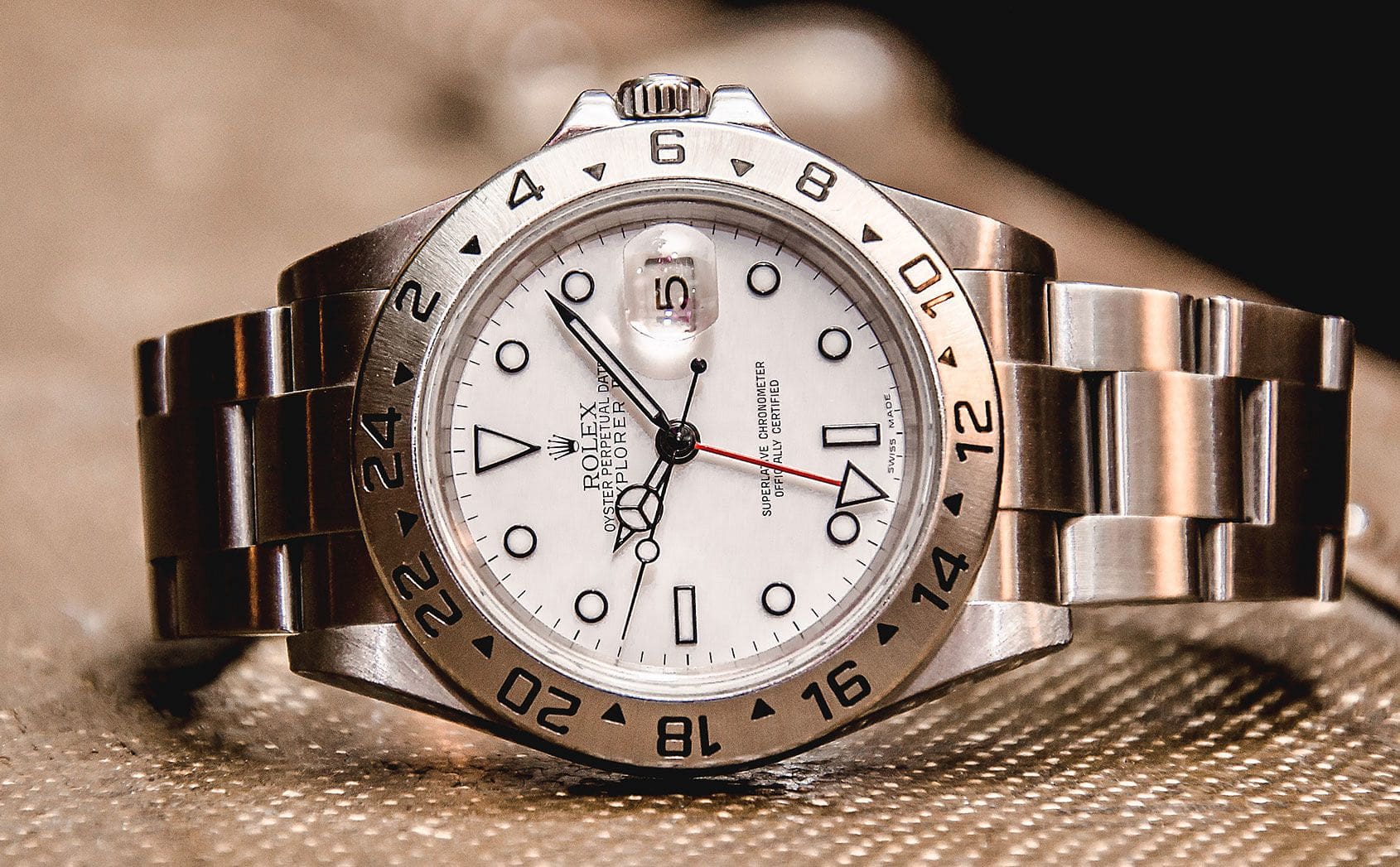DON’T FEED THE HYPE: 3 alternatives to the Rolex Explorer II ref. 226570
Zach BlassIt is time for another round of “Don’t Feed the Hype“. As a refresher for those who may not have seen previous entries in the series, my goal is to showcase readily available alternatives that provide a similar essence or merit to watches that have become increasingly unobtainable. It is my hope that these lesser discussed pieces can, in many respects, offer the same level of satisfaction as the actual watch in question. For the sixth entry into the series, I am going to tackle 3 Rolex Explorer II alternatives you may want to look into if you think the call from your AD is never going to come.
Omega Aqua Terra 150M Co‑Axial Master Chronometer GMT Worldtimer 43mm
If a switch-up in aesthetic, and extra millimetre in diameter doesn’t bother you, you actually stand to get more value from the Omega Aqua Terra 150M Co‑Axial Master Chronometer GMT Worldtimer 43mm. The watch may have a more elegant look to its design in comparison to the Rolex Explorer II, but don’t get it twisted. It is actually just as robust, if not more robust, then the Explorer II ref. 226570. As an example, the Omega Aqua Terra 150M Co‑Axial Master Chronometer GMT Worldtimer 43mm is 50 metres more water-resistant with a depth rating of 150m secured by a screw-down crown. Movement to movement, the in-house Omega 8938 movement may have 10 hours less power reserve (60 hours) than the Rolex 3285, but it does boast an anti-magnetic Co-Axial escapement with a free sprung balance and silicon hairspring, Master Chronometer certification, and a greater degree of movement decoration that is actually visible via its exhibition caseback. Another point of added value is its GMT Worldtimer complication.
The gorgeous blue dial features a 24-hour scale in its centre, framing a laser-ablated ocean and surrounding continents on a grade 5 titanium plate. Moving out past the sun-brushed blue and vertically teak-striped portion of the dial, you will find a circle of global destinations printed in red (GMT), silvery (+1h in summer) and blue (places without daylight savings) for added aid in usage of the complication. It is very simple and easy to use, in one setting position of the crown you are able to advance the hour hand in either direction without interrupting the timekeeping and the date will self-correct as you pass between hours. In the preceding crown position, you hack the seconds and are able to set both the hours and minutes. As you adjust both hands in this setting, the 24 hour ring will rotate in synchronization. To read the time in another time zone, you simply look at the disc numeral that aligns with the desired location (i.e in the picture above it is 12:00am in Moscow). The beauty is you get this worldtimer functionality for only $550 USD more than the retail price of the Explorer II.
Price: $9,100 USD
Grand Seiko SBGM245 & SBGM247
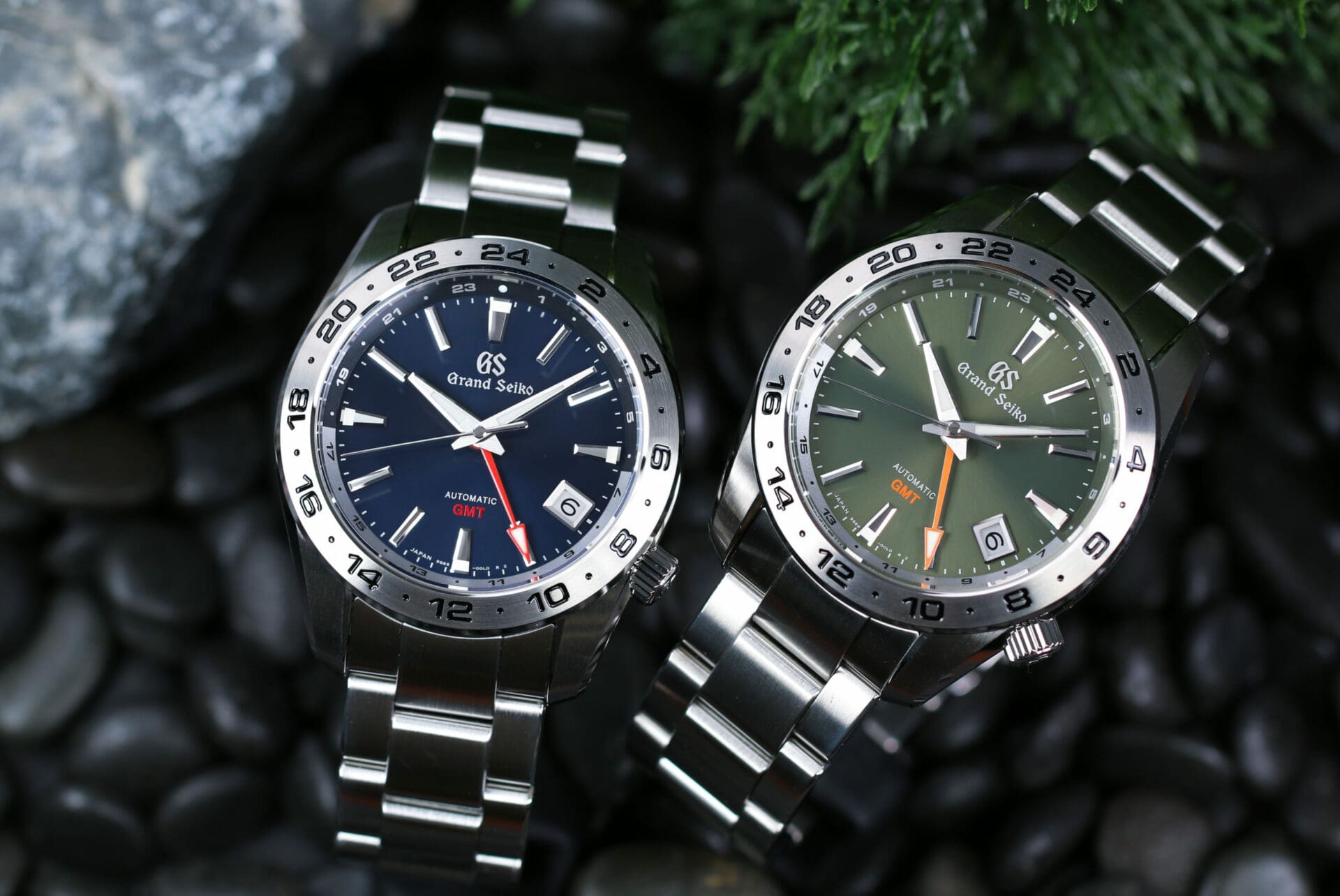
Now aside from the crown position at 4′, a few millimetres of extra thickness, and dial/GMT hand colors, what you have with the Grand Seiko SBGM245 and SBMG 247 is a watch that hits many of the same notes as the Rolex Explorer II. The first immediate connection is the stainless-steel bezel, with a black etched 24-hour scale akin to the Rolex Explorer II. But the case dimensions differ a bit, with a more compact 40.5mm diameter, slightly larger thickness of 14.4mm, and a tamer 48.6mm lug-to-lug across the wrist. The case front, bezel, and three-piece link bracelet are all hairline satin-brushed, with the bevel of the bezel, lug hoods and entire caseband rendered in a Zaratsu distortion-free mirror polish you won’t find on the Explorer II. While nearly half the price of the Explorer II, the Grand Seiko GMTs offer hand-finished cases, hands, and hour indices – a huge value draw across many of Grand Seiko’s timepieces.
In terms of the movement, the in-house 9S66 offers a near equal experience to the 3185 from Rolex. The 9S66 offer 72 hours of power reserve and has a calendar-linked hours hand that can be adjusted without interrupting timekeeping – the mark of a “true” GMT that you also find in the Rolex Explorer II. Where the movement falls a bit short of Rolex’s 3285 is with its regulation. Grand Seiko pledges a mean daily rate of +5/-3 seconds per day, which while not Superlative Chronometer +/- 2 seconds per day accurate is still well within COSC standards. I won’t pretend that the added thickness is not noticed on the wrist, but from personal experience in the metal it still wears very well and its sloped lugs help the case sit closer to the wrist then the dimensions may suggest. Also, remember these GMT watches are twice as water-resistant with a depth rating of 200m (versus 100m) and is also secured by a screw-down crown. So, it isn’t so hard to believe that some buyers would be willing to trade a few millimetres of thickness for double the depth rating.
Price: $5,700 USD
Go vintage: the Rolex Explorer II ref. 16570
For the first time in the history of the series, I am including an older version of the current production watch as a viable alternative. It may seem like a cop out, but I believe it is actually a very compelling option to consider if you are in the market for an Explorer II. To state the obvious, if you are dead-set on the Rolex Explorer II aesthetic and framework, you’re best able to find it by considering another, more available, Rolex Explorer II. The ref. 16570 already has a cult following as a result of the current production shortage, but it also remains a fan favourite due to its more compact 40mm case and tapered lugs. The in-house caliber 3185, while introduced in 1989, still holds up to modern standards with 50 hours of power reserve and a full balance bridge.
Compared to the modern caliber 3285, I will disclose, however, that the power reserve is 20 hours less and that the Nivarox hairspring used in the 3185 is approximately 10 times less resistant to magnetism than the Blue Parachrom hairsprings found in the modern ref. 226570. I should also mention that the ref. 16570 utilised the 3185 from 1989-2006, with ref. 16570s made after 2006 using the slightly tweaked 3186 (which corrected a very minor issue where the GMT hand jittered when setting the time). The good news, in regard to pricing, is that they can be sourced for close to the retail price of the ref. 226570 – $8,550 USD. But remember if you’re considering this you probably aren’t able to get the 226570 at retail anyway and its premium on the secondhand market is more than the cost of the ref. 16570.
Estimated price according to Chrono24: $9,028 – $10,206 USD




